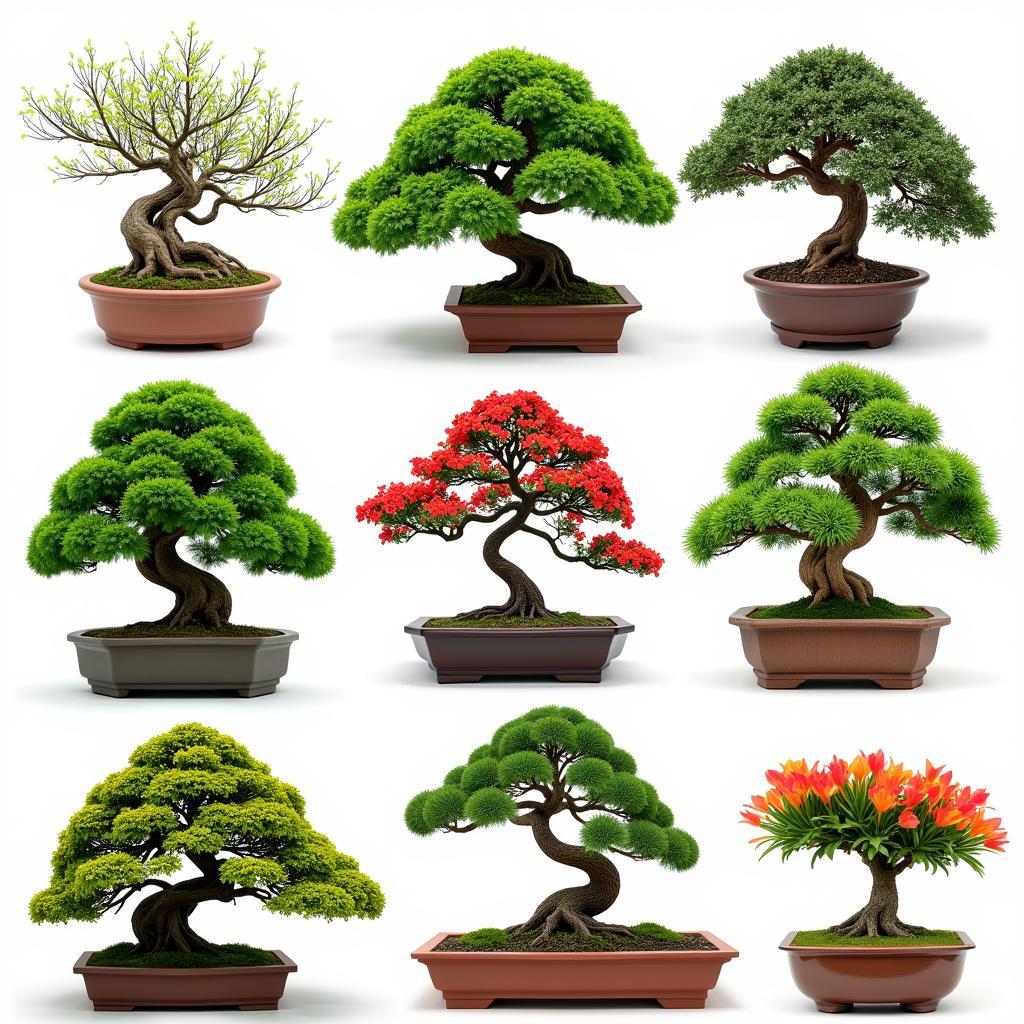Bonsai, the art of cultivating miniature trees in containers, evokes images of serenity, patience, and a deep connection with nature. While often associated with Japan, bonsai actually originated in China over a thousand years ago. Through cultural exchange, this ancient practice found its way to India, where it has been embraced and adapted over the centuries.
The History of Bonsai in India
The precise timeline of bonsai’s arrival in India remains shrouded in the mists of time. Some historians believe that Buddhist monks, traveling along the Silk Road, introduced bonsai to the subcontinent as early as the 6th century CE. These miniature trees, representing harmony and balance, would have resonated deeply with Buddhist philosophy.
Others argue for a later introduction, suggesting that bonsai arrived in India during the Mughal period (16th-19th centuries). The Mughal emperors, known for their love of gardens and refined aesthetics, likely encountered bonsai through their interactions with Persia and China. Mughal miniature paintings from this era often depict bonsai-like trees, lending credence to this theory.
Types of Bonsai Trees in India
Over time, bonsai in India developed its own distinct character, influenced by local climate, available species, and cultural preferences. Today, a wide variety of trees are cultivated as bonsai in India, including both native and introduced species.
-
Ficus Religiosa (Peepal): Revered in Hinduism and Buddhism, the Peepal tree, with its heart-shaped leaves and graceful branches, is a popular choice for bonsai. Its religious significance adds another layer of meaning to the art form.
-
Ficus Benjamina (Weeping Fig): Known for its elegant drooping branches and adaptability, the Weeping Fig is a beginner-friendly bonsai species. It thrives in warm climates and tolerates indoor conditions well.
-
Azadirachta Indica (Neem): Celebrated for its medicinal properties, the Neem tree is a symbol of health and resilience. Its distinctive leaves and rugged bark make it a unique and striking bonsai subject.
-
Bougainvillea: This vibrant flowering plant, with its colorful bracts, adds a touch of tropical beauty to bonsai collections. Bougainvillea bonsai are particularly popular in southern India, where the climate is ideal for their growth.
 Diverse Bonsai Tree Species Found in India
Diverse Bonsai Tree Species Found in India
Caring for Your Bonsai in India’s Climate
India’s diverse climate, ranging from tropical to temperate, presents both challenges and opportunities for bonsai enthusiasts. While some species thrive in the warmth and humidity of the coastal regions, others prefer the cooler, drier conditions of the north.
Here are some essential tips for caring for your bonsai in India:
-
Watering: Bonsai trees, with their shallow containers, require frequent watering, especially during the hot summer months. However, overwatering can be just as detrimental as underwatering. It’s crucial to monitor the moisture level of the soil and water only when necessary.
-
Sunlight: Most bonsai species benefit from several hours of direct sunlight each day. However, in extremely hot climates, it’s important to provide some shade during the afternoon to prevent leaf scorch.
-
Fertilizing: Regular fertilization is essential for maintaining the health and vigor of your bonsai. Use a balanced fertilizer specifically formulated for bonsai trees, and follow the recommended application rates.
-
Pruning: Pruning is an integral part of bonsai cultivation, shaping the tree’s growth and maintaining its miniature size. Regular pruning also helps to improve air circulation and light penetration, promoting overall health.
-
Repotting: Bonsai trees need to be repotted every few years to replenish the soil and provide adequate space for root growth. The best time for repotting is typically during the spring, before the onset of new growth.
Finding a Bonsai Community in India
The art of bonsai, with its emphasis on patience, observation, and connection with nature, has resonated deeply within Indian culture. Today, there are thriving bonsai communities across the country, offering support, guidance, and inspiration to enthusiasts of all levels.
From local clubs and workshops to online forums and exhibitions, there are numerous ways to connect with fellow bonsai lovers in India. Sharing knowledge, techniques, and passion for this ancient art form is an integral part of the bonsai experience.
Conclusion
Bonsai in India, while rooted in ancient traditions, continues to evolve and adapt, embracing the country’s diverse flora, cultural influences, and contemporary aesthetics. As more people discover the beauty, tranquility, and creative possibilities of bonsai, this art form is poised to flourish for generations to come.
If you’re interested in embarking on your own bonsai journey, remember that patience, dedication, and a love for nature are the most essential tools you’ll need. Embrace the journey, learn from your experiences, and allow the art of bonsai to connect you with the timeless beauty of the natural world.
Need Help? Contact Us:
Phone Number: 0902476650
Email: [email protected]
Address: 139 Đ. Võ Văn Kiệt, Hoà Long, Bà Rịa, Bà Rịa – Vũng Tàu, Việt Nam.
Our customer support team is available 24/7.





